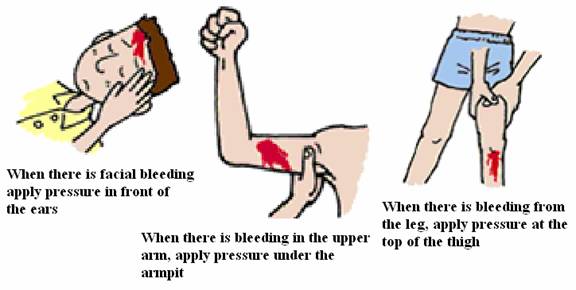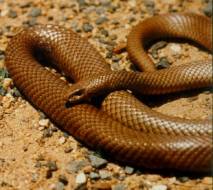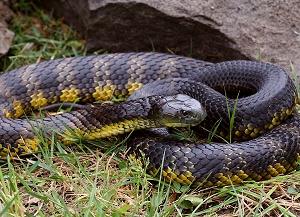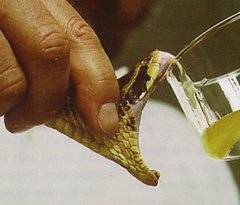Tiger Snake for Breakfast
/Tiger Snake: an unlikely breakfast?
Gold Coast naturalist David Fleay recalls the time, collecting snakes for Commonwealth Serum Laboratories anti-venene research, he and his companion hit on the idea of the snake as food.
Moira Lakes upstream from Echuca, along the big bend of the Murray crawls with snakes.
Only droughts knock their numbers back and even these natural disasters serve merely as temporary checks.
I first came across this 'snakiest' place in all Australia in 1926 as a wandering kid on a push bike marveling at first of the river swamps and their mighty flocks of birds.
Those days, local Aborigines had not been pushed into settlements but hunted happily as of yore. They speared cod from hollowed out redgum craft and lived in humpies.
Bu the Tiger Snakes, then as now, dominated the scene -- a fact forcibly noticeable when the snow waters flooded down in October, isolating box ridges and the higher river banks for weeks or even months at a time.
Then, if so inclined, you didn't need to go on a binge at Barmah Pub to get the horrors.
Landings on flood-girt high spots in the morning sun began an all-pervading series of slitherers, accompanied by the incredible spectacle of the Tigers by the score racing into piled up debris.
Less fortunate snakes sun-basked three, six, 10 or 13 metres above water level in and about the loose bark of ancient isolated eucalypts.
No wonder in later days of antivenene work, we could amass 80 to 100 'milkers' in a morning's work.
 One evening, by the camp fire with snake bags full and tied and passing night herons attempting to croak above the mighty roar of amorous frogs, my mate speculated about Burke and Wills.
One evening, by the camp fire with snake bags full and tied and passing night herons attempting to croak above the mighty roar of amorous frogs, my mate speculated about Burke and Wills.
In their desperate need for some form of sustenance, had they ever considered snake as food? That did it, for, tough as we reckoned we were, we'd never tested such a possibility ourselves.
Next morning, a passing tiger snake was killed, beheaded, skinned and cleaned.
The fact that our victim carried parasitic nematode worms packed in its stomach almost halted the culinary experiment, but curiosity triumphed and the carcass was then boiled for 15 minutes in salty water.
Finally we fried our quarry in butter and sat on a log for a tiger snake breakfast.
Still not quite convinced we'd removed the very potent venom by decapitation, my mate said his only grace before a meal for the entire trip!
However, almost immediately his apprehensions to eat the tiger snake vanished like the mists of morning.
That fat old Tiger was delicious - a kind of cross flavour between fish, eel and chicken.
It was completely consumed and we didn't even begin to hiss.
Considering that canned Rattlesnake sells from the shelves in USA and crocodile meat has its devotees, why not Tiger Snake fillets or Mulga munchies for Australian gourmets?
What a marvelous idea for the money-spinning entrepreneurs of Surfer's Paradise!

















